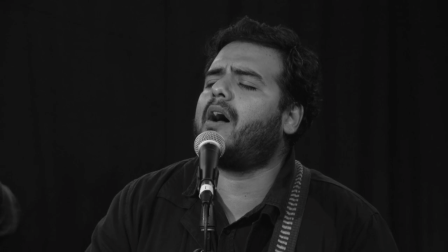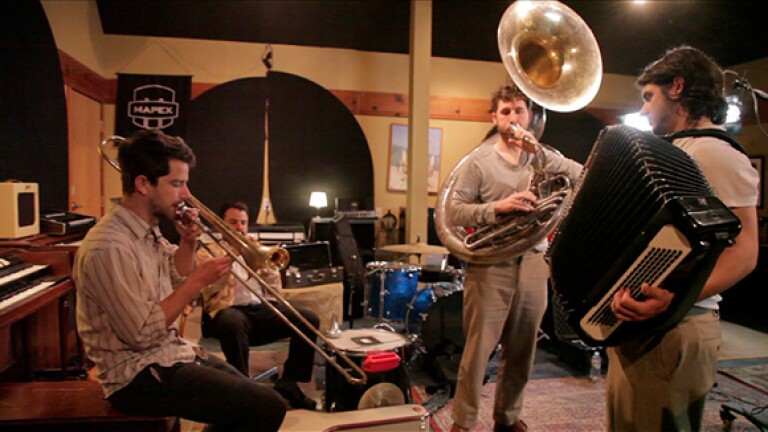
Songs in the Key of Los Angeles: La Santa Cecilia
In partnership with The Library Foundation of Los Angeles: The Library Foundation of Los Angeles supports and enriches the capabilities, resources, and services of the Los Angeles Public Library.
Songs in the Key of L.A. is a multi-platform collaboration between the Library Foundation of Los Angeles, the Los Angeles Public Library, and USC professor Josh Kun that brings to life the Library's extraordinary Southern California Sheet Music Collection. Five L.A. artists were invited to pick some sheet music, study it, and then interpret it in any style of their choosing. The finished products are now available for free download from the website of the Los Angeles Public Library, and Artbound produced short documentaries on the process.
The brainchild of ethno-imagineer and socialite Christine Sterling, Olvera Street was both an attempt to save the plaza from encroaching Union Station and Civic Center developers who were ready to clean up the "seedy" and "disease ridden" plaza and all of its "undesirable" racial elements, and re-imagine it as a Mexico that the Los Angeles Times and the Chamber of Commerce were more comfortable with. Sterling herself openly called it "a mixture of romance and capitalism."
Of course, Olvera Street the Hollywood movie set didn't stop it from becoming a valuable hub of Latino life, business, religion, and culture-- from La Iglesia de Nuestra Señora la Reina de Los Ángeles and the many Mexican-run shops and food stalls to the leading Mexican and Mexican-American musicians who frequently performed there (Lalo Guerrero, for example, was also a Café Caliente regular).
The members of the band La Santa Cecilia know this split-screen version of Olvera Street all too well: it's the very foundation of their own musical identity. "My grandfather came and started selling little pottery and then he had the burro where we'd take photos," singer Marisol Hernández told me after the band finished recording their own version of "Chiapanecas." "So it's very much like a tourist place, but it also represents a lot of Mexican culture. It's a place where a lot of Latin people from Latin America still come because it reminds them of home."
Like the song? Here's a free download of La Santa Cecilia performing "Chiapanecas."
Purchase the book, "Songs in the Key of Los Angeles" by Josh Kun.
Related
























